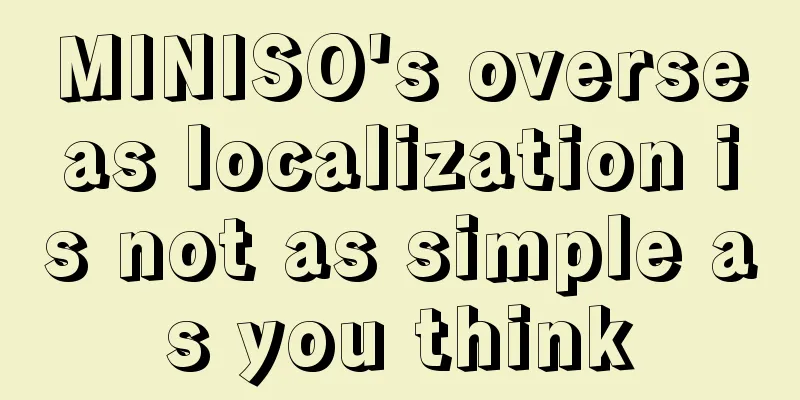Building an anti-fragile growth model, the global content system of consumer goods and the second growth curve

Many consumer brands rely on the Tmall channel. It is normal for GMV to account for more than 70%, but it is risky in the long run. Let me give you two real examples. Rongmei Co., Ltd., the first Taobao women's clothing stock, saw a sharp decline in revenue and profit margin in the first quarter of 2024. There are many reasons for this, one of which is that it is too dependent on Taobao, where 99% of its GMV comes from. Three Squirrels has been working hard to reduce its reliance on Taobao and optimize its channel structure in recent years. After going public, the competition intensified and the cost of acquiring customers increased significantly, which became one of the important reasons for their low profit margin. We have consulted with several brands and encountered similar situations. In summary, there are two characteristics:
This will result in all brands in the category competing for Tmall. However, users are basically a stock market, and the annual increase is not enough to share, and the cost and difficulty of acquiring customers will increase. This is the "life cycle of a channel". When the bonus period has passed and the growth is approaching the ceiling, if you still put all your eggs in one basket, such growth will not be anti-fragile. As a result, you will be backfired by a single channel and your income will plummet. 01How to solve the problem of single channel? From the perspective of long-term growth, every brand must build its own global content system. The importance of this matter can be seen in the second growth curve theory. Before the brand's old growth curve gradually flattens or even declines, the second curve should be laid out. Once it reaches the stall point, it will be difficult to start the transformation again. Seize the opportunity, start building a content system, and deeply operate the conversion chain of "passers-by-by-by-product-interaction-purchase-private domain-repeat purchase-sharing-recommendation-die-hard fans", influence the target groups in different links to enter the user pool, gradually build the competitiveness of endogenous growth, and the anti-fragility ability will be greatly enhanced. In short, the global content system is the second growth model in the low-growth era. 02So, what problems can the global content system solve, what categories does it correspond to, and what is the strategy? See the figure below: The horizontal axis is the decision-making cost, which is related to the average order value and influence.
The vertical axis is emotional value, focusing on emotions and information respectively. It can be understood as follows:
Why can this picture solve the problem of single channel? The core is: content builds the brand's own ecosystem for acquiring and retaining customers. There are two key points in this picture: 1. Extend the chain of customer acquisition and retention, both forward and backward In the past, it mainly focused on the user purchase link, but now it has extended forward to user consumption decisions and backward to cover user services and repeat purchases, making the entire chain more complete. 2. Integrate the advantageous resources of various platforms to increase customer acquisition and retention paths In the past, we mainly relied on a few channels such as Tmall and JD.com. Now we have integrated platforms such as Douyin, Xiaohongshu, and Video Accounts, and used their advantages in a targeted manner to establish multiple paths for acquiring and retaining customers. 03That’s all the theory. Let’s use two brands as examples to explain it in detail. 1. Case 1: A high-end home furnishing brandLet’s start with the industry. The home furnishing industry has gradually shifted from being driven by the real estate industry to being driven by user demand. This incremental market comes from generational differences and is a structural change in demand. Changes in demand come from the younger user groups and higher-end urbanization. First of all, people born in the 1990s and even the 2000s are the main consumer groups. Their demands are characterized by the pursuit of cost-effectiveness, personalization, comfort and practicality, and they pay more attention to integrated solutions. Secondly, users in first-tier and second-tier cities account for 5% and 26% respectively, nearly 30%. This group has strong consumption power. The change in demand comes from users' need for both service and experience. The service should be personalized. "I want a unique study room of my own." What is the solution? The experience must satisfy fantasy, and a scene needs to be created so that users can imagine what it would feel like after owning the product. This is something on the spiritual level, and it may appear before the user's consumption needs. "When I turn 30, I will need a study room like this." From these changes in users, we can probably realize that online content platforms, especially Xiaohongshu, are battlefields that must be deeply cultivated. Not only do the user groups match, but the advantages of pictures and texts are also suitable for home furnishing brands to present integrated solutions. Don’t jump to conclusions yet. Take this home furnishing brand as an example to see if the theory works. This furniture brand has the following characteristics:
Building a content system can solve these problems:
After seeing this, you basically understand why we need to create Xiaohongshu. This category requires content, pictures and texts. Each picture is an application scenario and a solution. Therefore, in this industry, the choice of content platform is clearer. "Xiaohongshu → Tmall" is the best MVP (the previous article mentioned that MVP is the most cost-effective solution). 2. Case 2: Luckin CoffeeLet’s start with the industry. Coffee is a functional product that also has social attributes. It is applicable to multiple scenarios. It can sustain the lives of workers and is also a social carrier in business or leisure occasions. Therefore, the essential reason driving coffee consumption is self-pleasing, which is not a rigid need but has emotional value. Luckin not only meets the above needs, but also provides high-quality and cost-effective products. This is also one of the characteristics of current domestic consumer goods, cost-effectiveness ≠ consumption downgrade. In summary, Luckin Coffee satisfies users' non-essential self-pleasure needs with a low price of 9.9 yuan. The decision-making cost is low and the emotional value is high, which is in the second quadrant of the above figure. The value that content can bring is to continuously build this consumption scenario and satisfy the user's emotional feelings of "buying a cup of coffee and coaxing myself to go to work". Then reach users at a high frequency to make the scenario a reality. Luckin Coffee is almost the best brand in this regard. Post content in the private domain to reach users. Coupons are issued every Monday with the message "Wake up! Time to get to work." Office workers drag their tired bodies to work after the weekend and will deeply empathize with this message, and this purchase scenario is confirmed. In addition, various IP co-branded activities will also attract attention and purchases, which is itself a kind of content. The choice of co-branded IP is clearly aimed at young office workers. A friend who works at Starbucks complained to me, saying: Luckin's joint ventures are all liked by young people, and Starbucks' joint ventures are all liked by executives. What he meant was that they were not down-to-earth and did not start from user needs. Of course, the most basic ordering and coupon issuance are all done on WeChat, so I won’t go into details. But what I want to elaborate on is that Luckin Coffee’s live streaming e-commerce can also be considered a kind of light content. Why is that? 1) Convert incremental users Platforms such as Douyin, Kuaishou and WeChat basically cover all domestic netizens, which is the largest user pool. Users who buy coupons here need to go to the Luckin App or mini program to redeem them, and then they will be converted into private domain users, which is incremental revenue. 2) Increase customer unit price and profit The pallet is the key, which can increase the average customer sku, such as the N-choose-1 coupon hoarding model; it can also promote single-item beverages or peripherals with higher profits. This is the advantage of live streaming e-commerce. Offline stores do not have this scenario and manpower. 3) Refined operations Luckin Coffee has adopted a low-price strategy, but it still has price-sensitive users, so it needs special price incentives. This is refined operation. However, Luckin Coffee is already losing money in the 9.9 war, so how can it motivate them? Just use the live e-commerce channel. It is more troublesome to buy coupons here and then redeem them. Non-price-sensitive users will be screened out by this operation cost, so live e-commerce can provide targeted incentives for price-sensitive users. This online ecosystem of WeChat private domain + live streaming e-commerce is Luckin Coffee’s full-domain content strategy. The success of this model is directly related to Luckin Coffee’s own business model. The core of Luckin is the financial model, which relies on opening more stores and brand promotion to reduce the cost of each store: If you open more stores and do a good job in branding, you can attract customers. To attract customers, you need to use mini programs or apps to place orders, convert them into private domain users, and then make repeat purchases. Once this model is running, competitors will not be able to learn it. For example, every time a brand collaboration is carried out, new cups, cup sleeves, paper bags, stickers and other equipment need to be replaced. Other brands simply do not have the ability to roll out 20,000 stores so quickly. Luckin's scale effect brings it leadership in total costs. In this complete chain, the role of content is to build scenarios and satisfy users' emotional values; as well as to reach users, find incremental users, increase unit prices, and increase the frequency of repeat purchases, thereby leading to GMV growth. 04That’s all, let me summarize. The problem that many consumer brands encounter in growth is that they have only a single channel for acquiring and retaining customers and lack the ability to resist fragility. In addition to e-commerce channels such as Tmall, the global content system is the second choice. In the long run, it is also a must. Start early and break through in stages. |
<<: The fastest way to exhaust a manager: work too hard on yourself and indulge others
Recommend
Can Xiaohongshu’s buyers’ first 618 shopping event support the platform’s e-commerce ambitions?
Why is this year's 618 promotion difficult but...
Ele.me, enters the two-dimensional game circle with a 50% discount
The latest move of Ele.me is eye-catching. They of...
Freight insurance and low prices are adjusted, and e-commerce is accelerating its return to commercial rationality
As the e-commerce industry develops rapidly, issue...
From data assets to journey metrics
From data accumulation to journey insights, this a...
What is Amazon PoA? What does it include?
Amazon is the world's largest cross-border e-c...
Can the domain name still be used after Shopify closes the store? How to avoid it?
After we open a store on Shopify, we must abide by...
The total number of online views exceeds 500 million. This generation of young people has a strong sense of stealing
On the Internet, the term "stealing feeling&q...
Is eBay a legitimate cross-border e-commerce platform? Does it require a lot of investment?
With the development of the global economy and the...
With the arrival of Sora, whose job will it take away?
OpenAI has a new life. In early 2024, OpenAI relea...
Are there any orders for opening a store on Lazada? What are the advantages?
Lazada is a well-known platform in cross-border e-...
How to advertise on Amazon variants? How to advertise?
Merchants who have opened stores on Amazon should ...
What is the best control level for Amazon ACOS? What are the stages?
Everyone knows Amazon well. When you open a store ...
11.58 million young people "escape from virtual to real": flee from large factories and flock to manufacturing
Nowadays, more and more young people are fleeing l...
Behind the popularity of 3.5-point restaurants: How are fake high-scoring businesses created?
Behind the popularity of 3.5-point restaurants, th...
Exclusive analysis of the "front-end real-name system" for all self-media on the Internet: causes and impacts
Recently, the news about the "front desk real...









